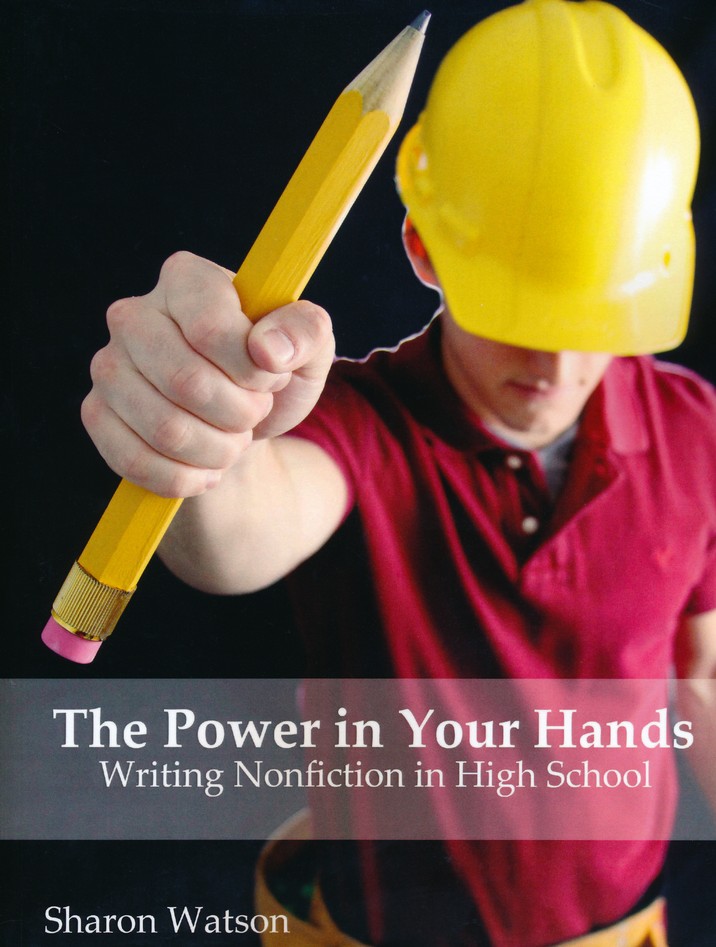My great-grandmother marked the day in her journal when she received her first icebox. What was she using for refrigeration before then?
One acquaintance traveled the world with the army during the Vietnam years and isn’t even allowed to tell me what he did, though he likes to tell me about the strange food he ate on those trips.
But I’m not the only one who knows interesting folks.
People in your family, your church, and your neighborhood have led remarkable lives as well. They’ve fought in wars and been in accidents. They’ve experienced disasters, invented things, started their own businesses, overcome debilitating abuse or sickness, beat the odds, seen the world, or eaten raw squid.
These people want to tell their stories to someone who will listen. And your children, in interviewing these people, will come away with a new perspective on history and life. This type of writing activity is well worth the effort.
The following guidelines are written to your student.
.
How to conduct the interview
Interviewing someone is an incredible way to experience real, living history. Here are a few tips.
1. Make an appointment and research.
Holidays are perfect times to conduct an interview with a family member or other person of interest, especially if the relative can come prepared for it. Before interviewing, research the person or anything about them. For instance, if the interviewee fought in the Korean War, research the war to better understand him and to prepare an informed list of questions.
2. Record the interview.
That way, you can concentrate on the person, not on taking notes. This will also help in gathering precise quotations used in the narrative essay later.
3. Ask open-ended questions.
Open-ended questions are ones that require more than a yes or no answer. For instance, instead of asking, “Did you like being a trapeze artist with the traveling circus?” say, “Tell me about your days as a trapeze artist with the traveling circus.”
4. Listen actively.
People respond well to this, and it will give you a better chance to ask effective follow-up questions.
Don’t be afraid of awkward pauses in the interview. Watch any TV news show with a famous interviewer like Barbara Walters and you’ll see how pauses effectively draw out the interviewee and keep him or her talking.
5. Ask if they want to add something.
Before ending the interview, ask your interviewee if there is anything else he or she would like to say. You might get some interesting responses now that everyone is relaxed.
6. Check the facts.
Sometimes dates or names are not remembered correctly, but you’ll want to get them right for your essay.
Shy students often freak out—quietly—when considering the possibility of conducting an interview, but shy people are the best interviewers. Instead of talking, they listen well. They understand that the interview isn’t about them; it’s about the interviewee.
.
How to write up the interview into narrative form
1. Choose the story or slant.
You are not going to write this interview in a question-and-answer format. Instead, you are going to write a story, a narrative essay, about this person. Think about the material you have. Listen again to the interview and think about these questions:
- What is the important story to tell?
- What personal quality do you want to emphasize?
- What feature or time period in your person’s life do you want to write about? Choose only the slant you want to highlight.
2. Start with something to grab your reader.
Begin your narrative essay with a fascinating story, fact, or quotation from your interviewee. Let that set the tone and direction for the whole essay. If you begin with a story, don’t finish it until later in the essay. Keep your readers interested.
3. Describe your person.
Include a short description of your person, including the age, soon after the introduction. For instance, “Marie, 79, sat on a little chair with her back straight, looking like a tiny bird on a still wire.” Include mannerisms and perhaps the sound of his or her voice (“scratchy,” for example). Use direct quotations. This way, readers will be able to see and hear your person.
4. Be chronological.
If you need to back up and tell how your person got into the introductory story, write his or her history chronologically. Then catch readers up to the story.
For instance, if you begin the narrative essay with the trapeze artist hanging upside down by her toes caught in the rope, back up and tell about her life and how she came to be a trapeze artist, how she admired her mother and wanted to fly just like her mother did. When you catch up to your story, finish off the initial story so readers know what finally happened to your person. Don’t leave them hanging, so to speak.
5. Draw conclusions.
Tell how these events affected your interviewee, what she learned from all this, or how her life has affected you. Draw conclusions about the story, time period, or the character trait you highlighted.
You are writing to inform and entertain your audience. So inform. Entertain. And enjoy this amazing glimpse into someone else’s life.
The material for this article is taken from The Power in Your Hands: Writing Nonfiction in High School. Get free samples of the textbook and teacher’s guide (including a free grading grid), here. >>
Yours for a more vibrant writing class,













